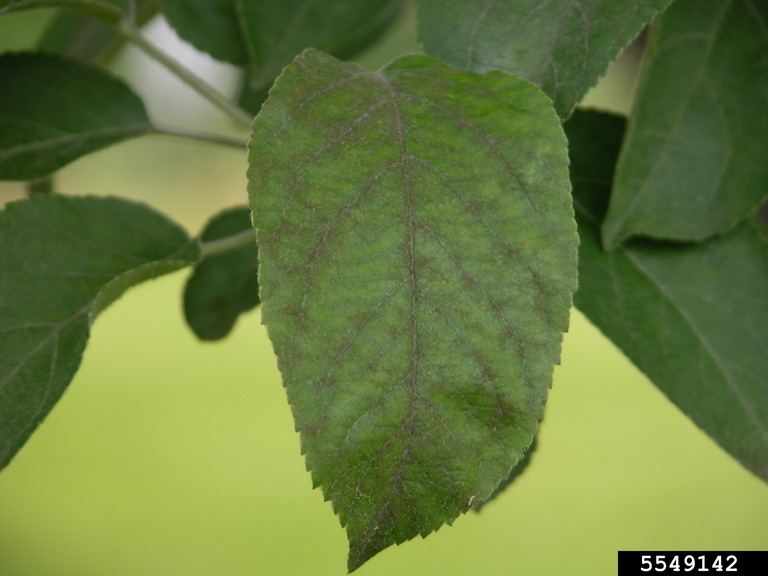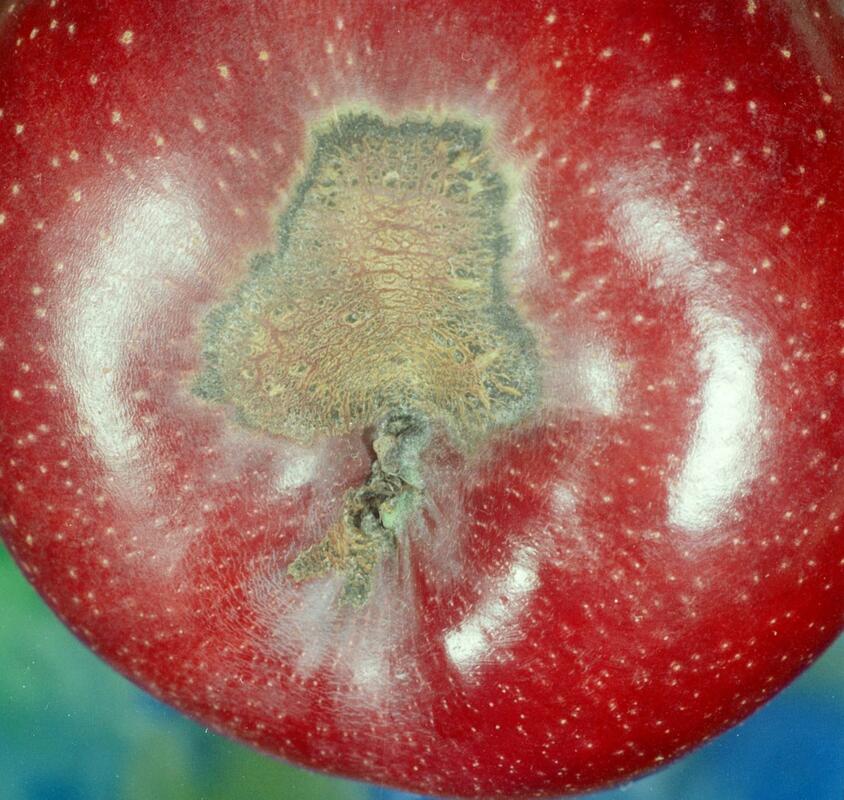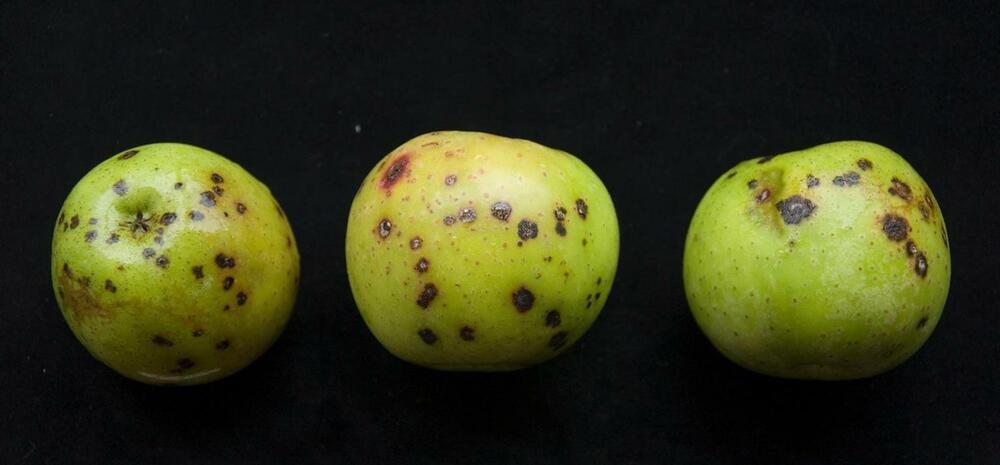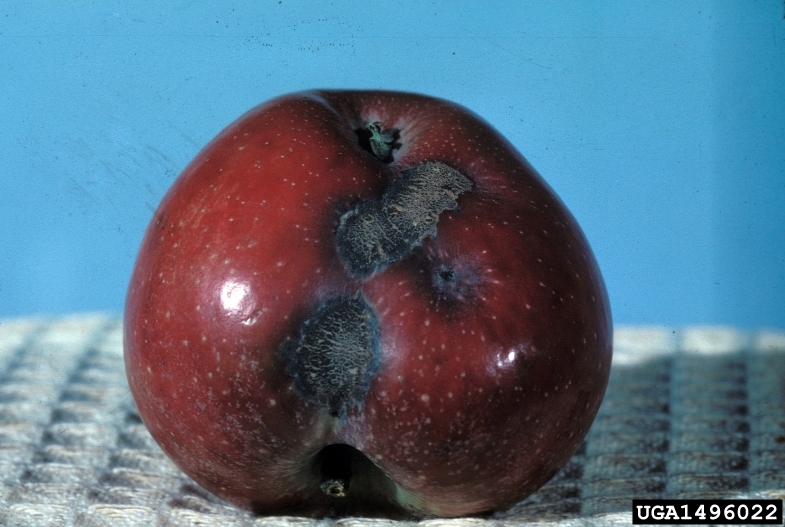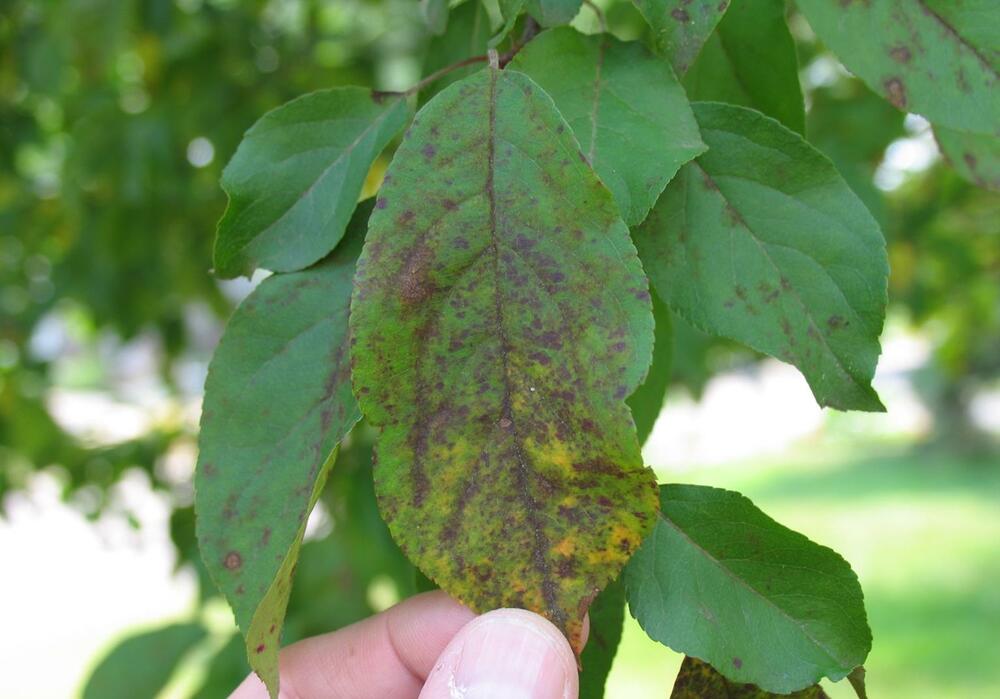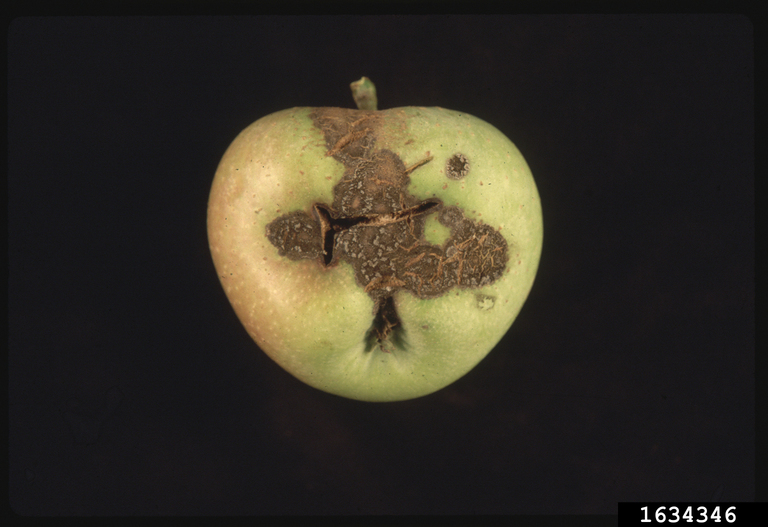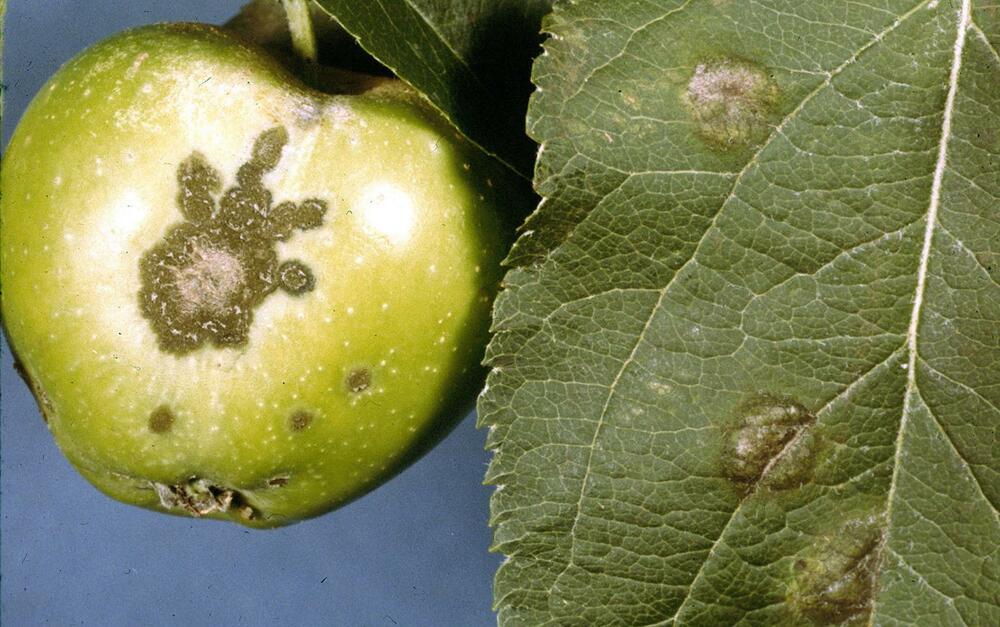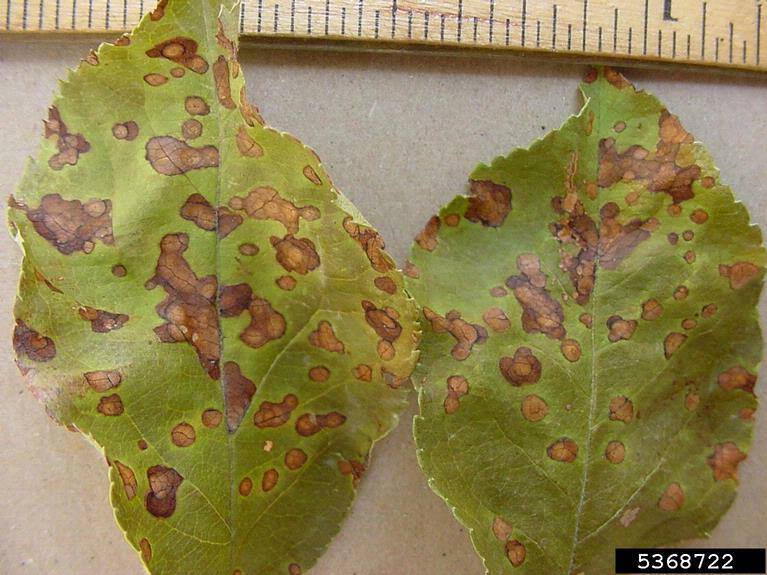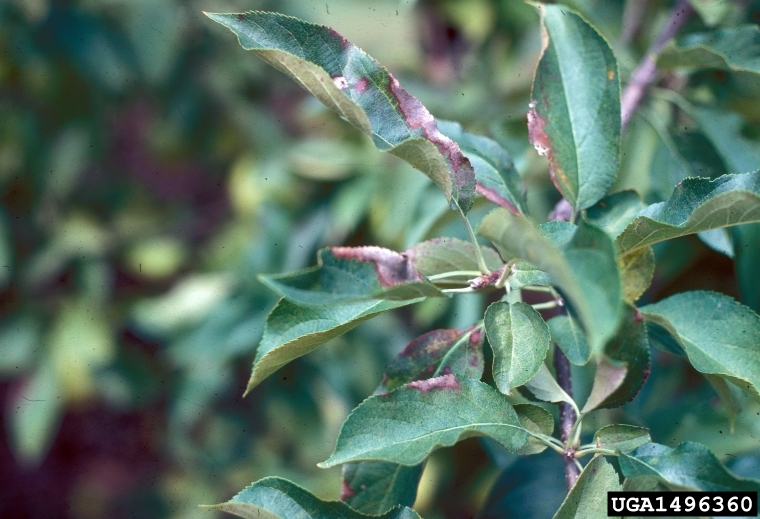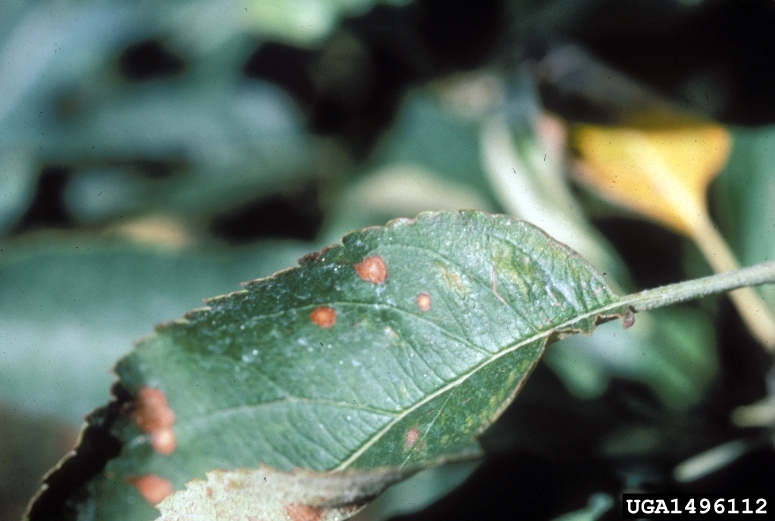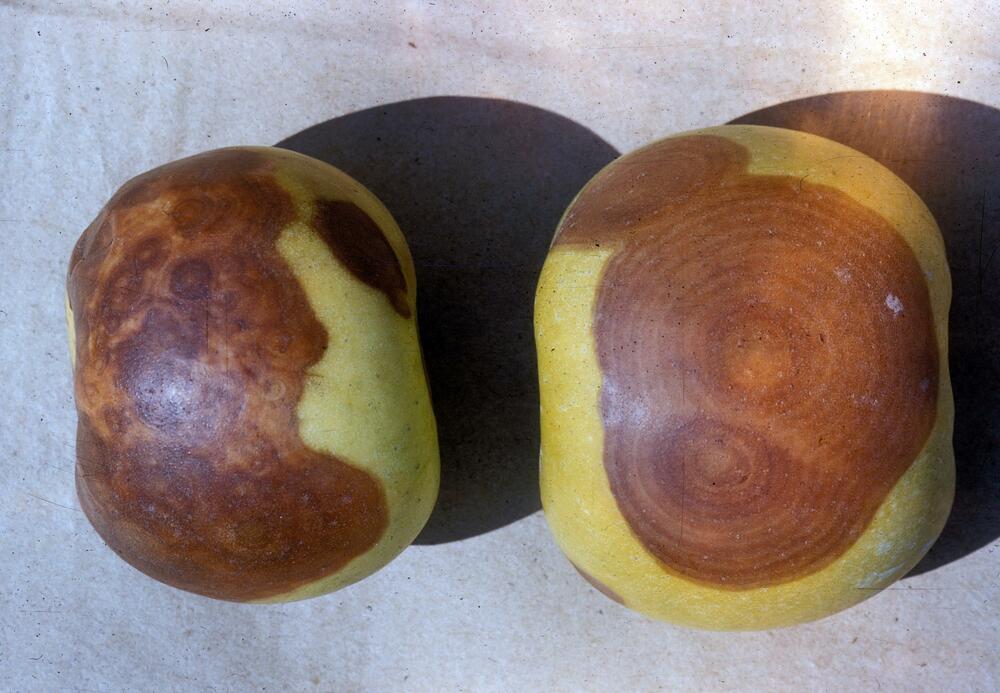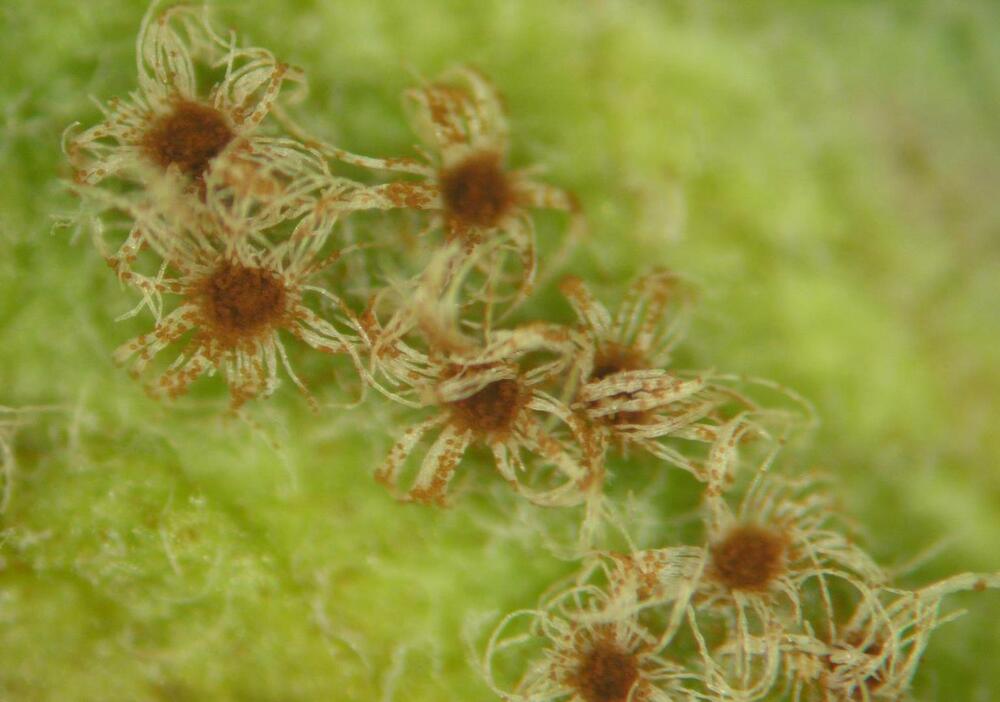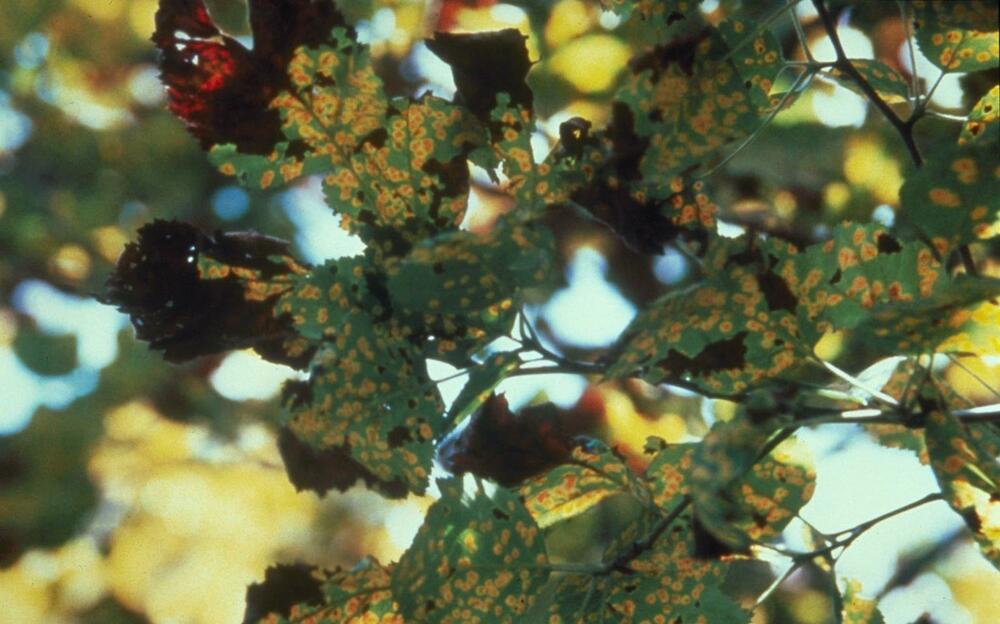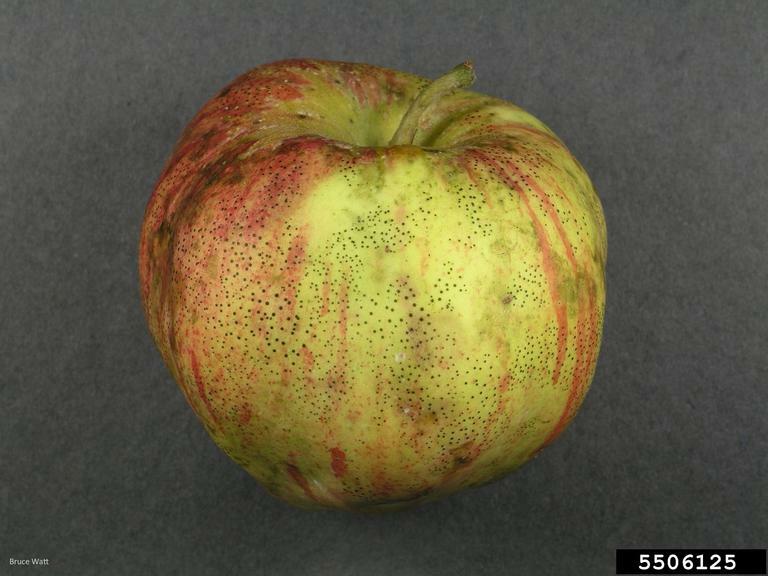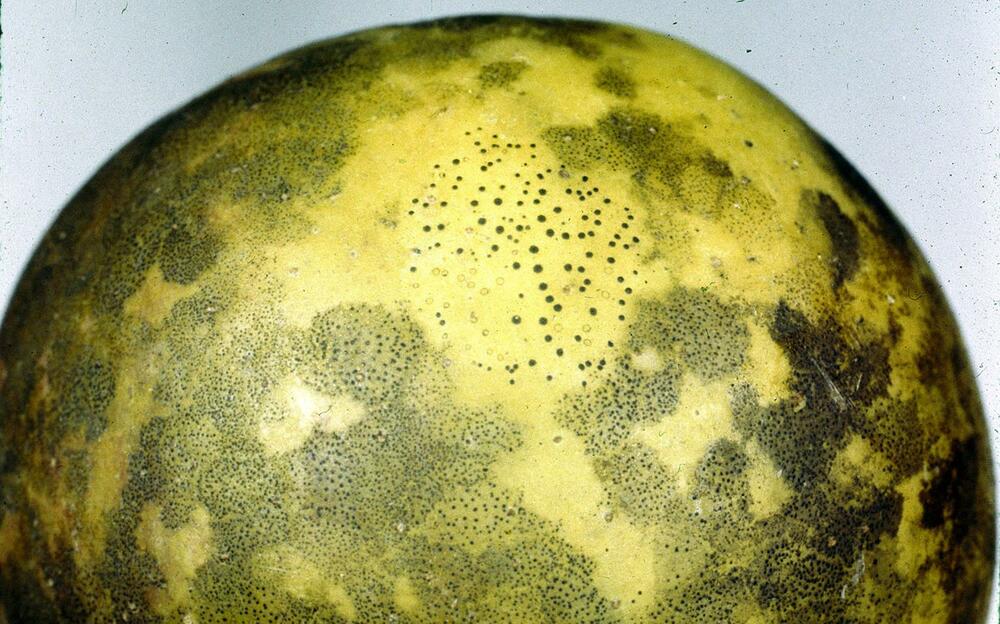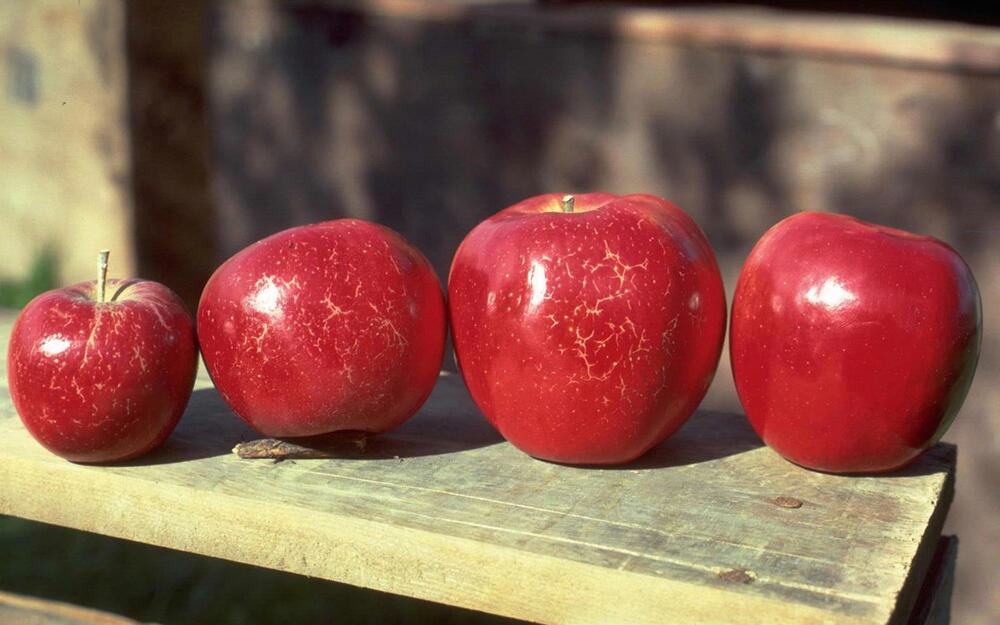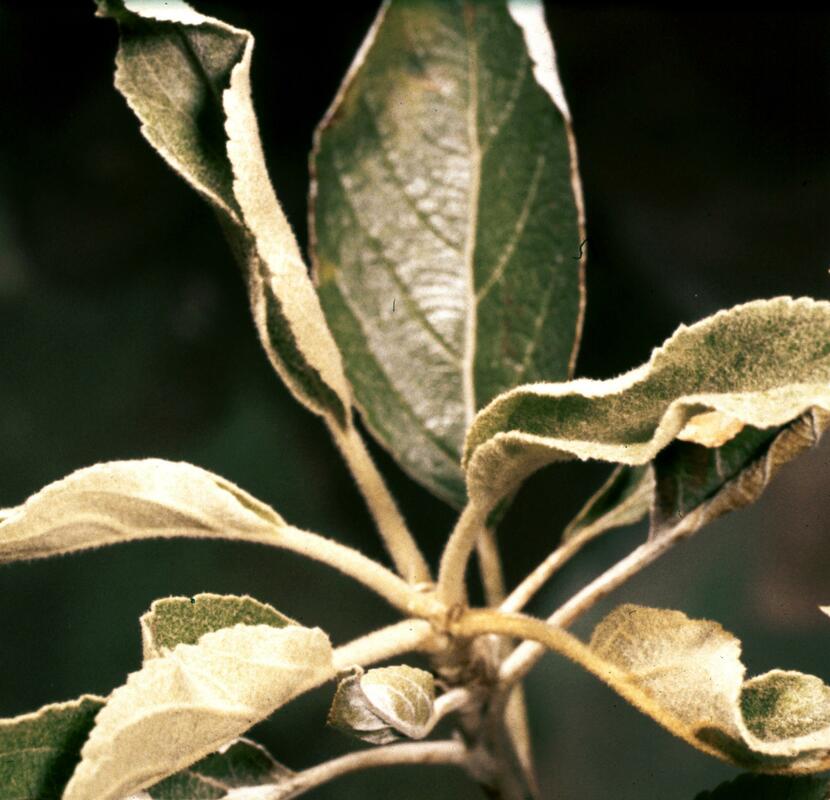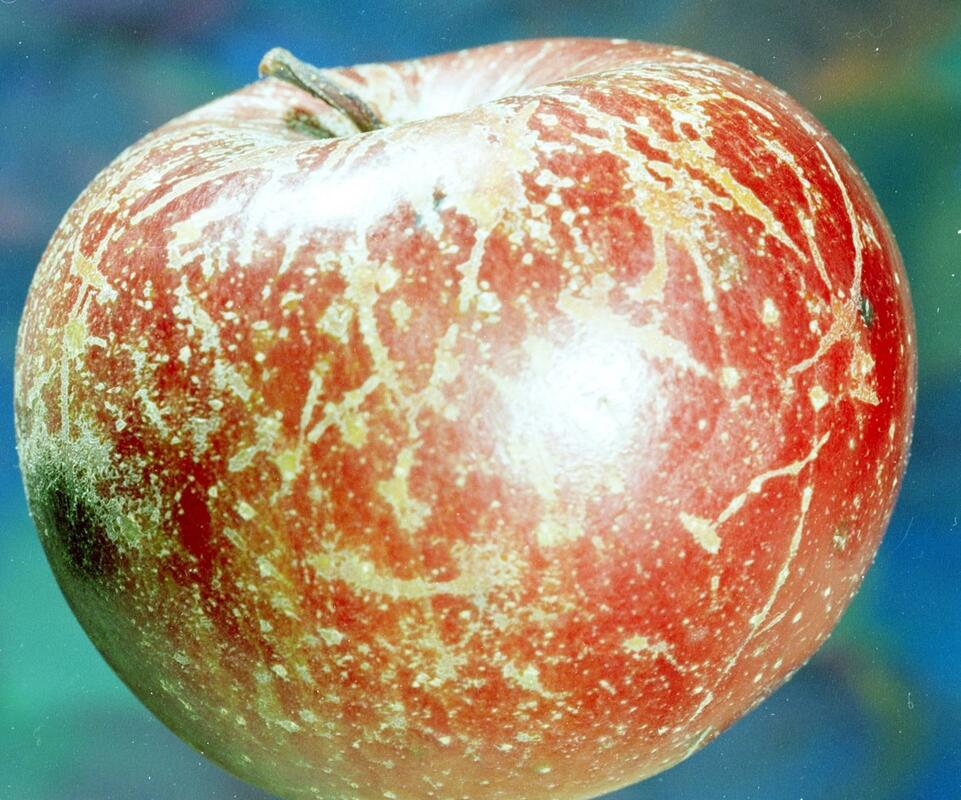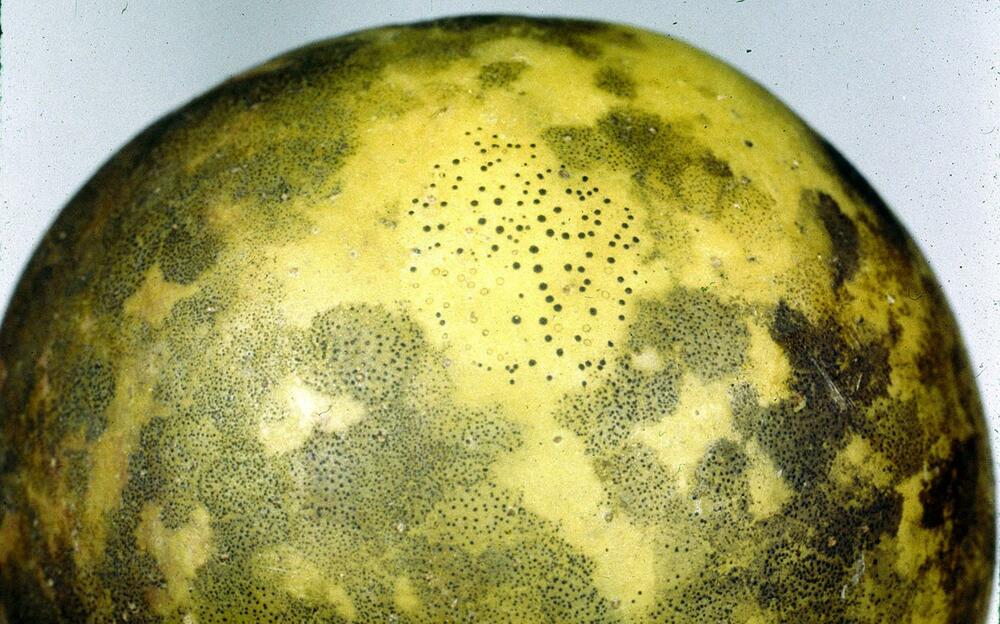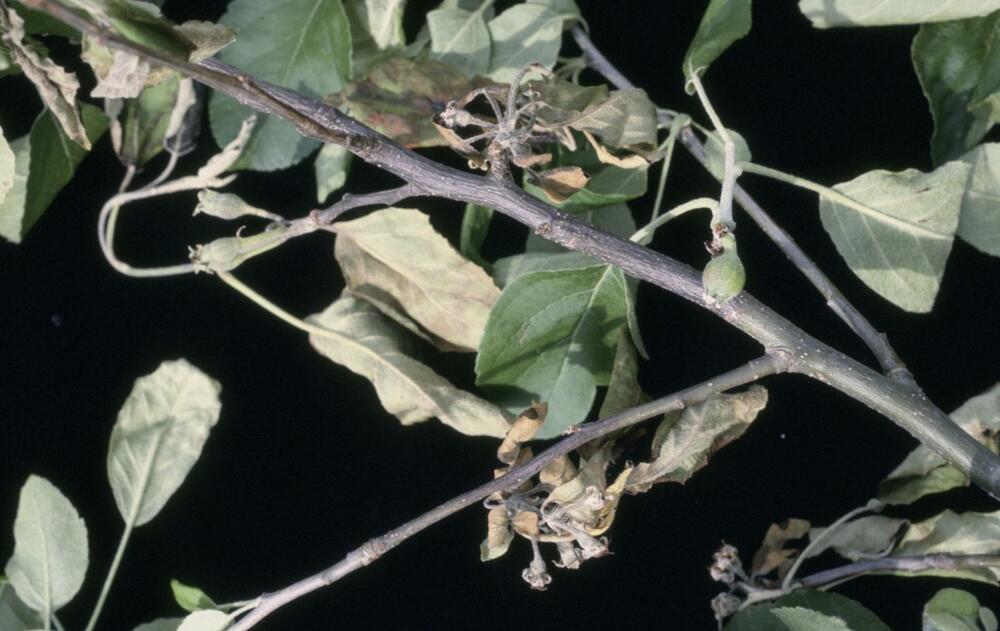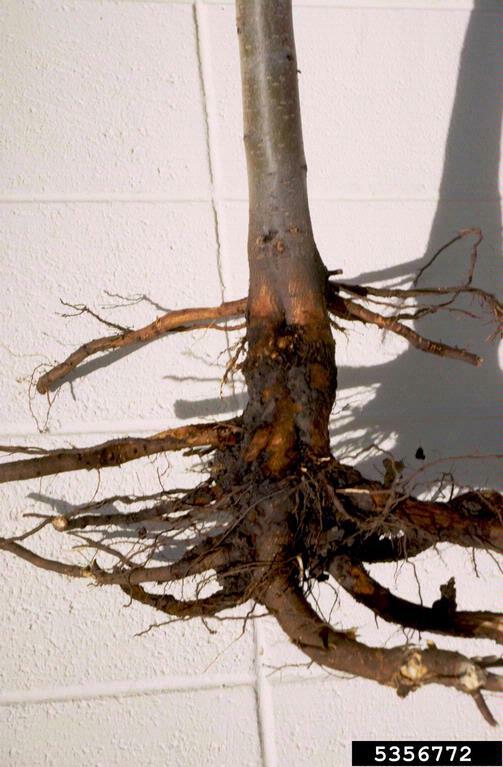Description
An apple is a deciduous tree grown for its fruits, known as apples. Apple fruits are one of the most widely cultivated fruits in the world. They are round (pome) in shape and range in color from green to red. The domestic apple tree is believed to have originated from Western Asia and the Mediterranean, having several wild ancestors. China is the largest producer of apples worldwide. Apple farming can be profitable and rewarding for farmers with suitable land, climate, and markets.
Crop Details
Scientific Name: Malus domestica
Common Name: tufaha (Sw), apple tree (En), manzano (Sp), pommier (Fr)

Ripe apples on tree

Young fruits beginning to develop

Apple tree

Apple blossoms

Apple fruits ripening on the tree
Uses & Benefits
Apples are most commonly eaten fresh but can also be used for baking and cooking. They can be processed into applesauce, cider, vinegar, juice, or butter. Slices can be dried for later consumption. Apples can also be used for the extraction of useful compounds such as fructose and pectin. Apples are rich in fiber, Vitamin C, minerals, and antioxidants.
Apples are a great source of soluble fiber, which can help reduce intestinal disorders. They also aid in controlling insulin levels by slowly releasing sugar into the bloodstream. Additionally, apples can lower cholesterol levels and reduce the risk of respiratory diseases. They are also known for their ability to detoxify and cleanse the body. Furthermore, apples have been traditionally used to treat conditions such as fever, dysentery, diarrhea, and constipation.
Varieties of Apple
There are thousands of apple varieties available around the world, and each one has its own unique characteristics such as size, color, shape, flavor, texture, ripening time, storage life, and disease resistance. Apple varieties can be broadly classified into three categories: (1) cider varieties, (2) cooking varieties, and (3) dessert varieties. These categories differ in various aspects such as color, size, aroma, smoothness, crispness, and tang.
Some of the most commonly known apple varieties are Red Delicious, Golden Delicious, Gala, Fuji, Granny Smith, Honeycrisp, Braeburn, McIntosh, Jonagold, and Pink Lady.
Propagation
Basic Requirements
Apple trees grow best in the tropics and at higher latitudes. They require a mild growing season and a cold winter to break their dormancy. In these latitudes, the tree will flower in spring and the fruit will ripen in the fall. In the tropics, the leaves will remain on the tree longer, making it essentially evergreen, and flowering and fruiting will happen sporadically throughout the year unless the tree manages to enforce a uniform cycle across the entire tree by bending shoots to create a wide tree.
Apple trees require fertile, well-drained, and well-aerated loamy-sandy soil, with a slightly acidic to alkaline pH of 5.5-6.5. You must test your soil before planting and amend it with organic matter, lime, or sulfur if necessary. Apples require a lot of moisture during the flowering and fruiting stage. Therefore, if you are growing apples in hotter regions, you will need to irrigate your trees. However, keep in mind that excess water around the root zone will encourage disease outbreaks and result in low crop yield. The best method of irrigating apples is through drip irrigation.
Growing from Seed
When planted from a seed, an apple tree can take six to ten years to mature and produce fruit of its own. Apple trees are small to medium-sized, reaching heights of 5–10 m (16.4–32.8 ft), with a central trunk that divides into several branches. The leaves of the tree are oval in shape and can reach up to 13 cm (5.1 in) in length and 7 cm (2.8 in) in width.
The standard method of propagating apple trees is by budding. When planting an apple nursery or orchard, it is highly advisable to plant seedlings budded from rootstock to prevent an increase in bud dormancy. Budded trees should be pruned in the first year to encourage new shoot growth.
Apple trees can also be propagated by grafting and mound layering. Grafting involves joining the lower part of one plant (rootstock) with the upper part (scion) of another. Grafting is usually done during the dormant season and must be performed on dormant scion and stock wood.
Mound layering is used to propagate apple clonal rootstocks. Soil is mounded around shoots that have been cut back, thereby stimulating roots to grow at the base of the shoots. A year before propagation begins, 8–10 mm (0.3–0.4 in) diameter stock plants are planted in rows and then cut back to 45–60 cm (17.7–23.6 in). They are then grown for one year.
In the spring, the plants are again cut back, this time to 2.5 cm (1 in) above the ground. New shoots gradually form, and more soil and bark are added in mounds around the plants. This cycle can continue throughout the growing season. Then the shoots are harvested by cutting close to the bases. The mother stool beds are then left exposed until further growth of the new shoots has occurred, and another cycle of hilling begins.
Apple seedlings are planted with a depth of 10-12 inches and spaced 8-10 feet apart in rows.
General Care and Maintenance
In the tropics, apple trees require careful management to make heavy crop loads sustainable. This includes bending shoots, pruning the tips, and defoliating the trees. Flowers are also removed to promote growth until the first fruit production, generally after 2 years.
Harvesting
An apple is ready for picking when its background skin color turns from green to yellow. The fruit comes off easily when harvested. Harvesting apples at the right time is key, not only to obtain the highest quality fruit but also to maximize the storage life.
Maturation time is dependent on weather conditions during the growing season. Early maturing apples are harvested in August-September.
There are several reasons why proper picking technique is important. First, simply pulling apples from the tree with force is likely to bruise the fruit and remove the stems. Apples without stems do not store as well as apples with stems.
Second, it is easy to identify apples that have been picked incorrectly. They will have noticeable fingerprint bruises. Make sure to palm instead of grab when picking. Yanking tends to remove spurs from the tree. These fruit spurs represent next year's crop, so by pulling them off, there will be fewer apples to harvest next year. In addition to not pulling the apples from the tree, there are some other actions that are important to avoid.
Apples that have touched the ground are a potential source of contamination. Never mix apples from the ground with picked apples. Apples that are decaying or rotten should be dropped on the ground and never placed in your bin. Do not throw or drop apples into your bucket, as this will certainly cause bruising. And always avoid squeezing the fruit when picking.
References
CABI Crop Protection Compendium. (2013). Malus domestica datasheet. Available at: http://www.cabi.org/cpc/datasheet/31964. [Accessed 05 November 14]. Paid subscription required
Peck, G. M. & Merwin, I. A. (Eds) (2009). A Grower's Guide to Organic Apples. Cornell Cooperative Extension. Available at: nysipm.cornell.edu/organic_guide/apples.pdf. [Accessed 05 November 14, link broken Nov 2 2018]. Free to access
Polomski, B. & Reighand, G. (2007). Home and Garden Information Center: Apple. Clemson Extension. Available at: http://web.archive.org/web/20060907110823/http://hgic.clemson.edu/PDF/HGIC1350.pdf. [Accessed 05 November 14]. Free to access
Sutton, T. B., Aldwinckle, H. S., Agnello, A. M. & Walgenbach, J. F. (Eds.) (2014). Compendium of Apple and Pear Diseases and Pests. 2nd Edition.
American Phytopathological Society. APS Press. Available at: http://www.apsnet.org/apsstore/shopapspress/Pages/44303.aspx Available for purchase from APS Press
Warmund, M. (2014). Home fruit production: apples. University of Missouri Extension. Available at: http://extension.missouri.edu/explorepdf/agguides/hort/g06021.pdf. [Accessed 05 November 2014]. Free to access
Pests
Category : Insects
Aphids (Green apple aphid, Woolly apple aphid)
Aphis pomi
Eriosoma lanigerum

apple aphid (Aphis pomi) overwintering eggs
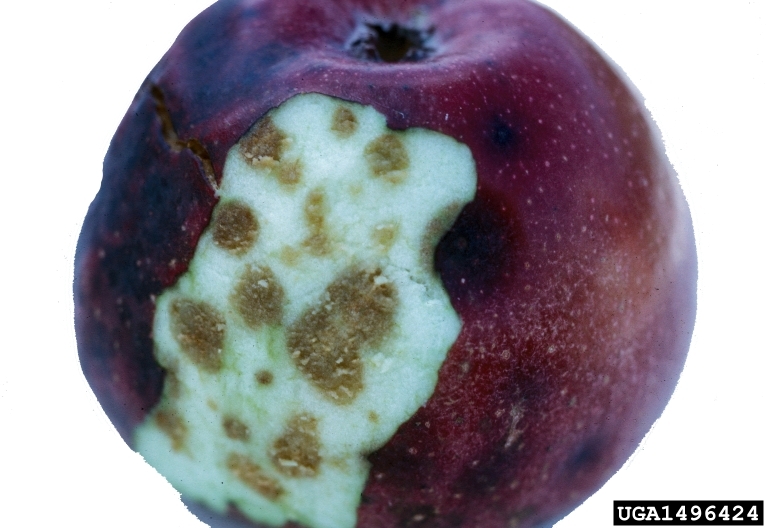
Woolly apple aphid damage

Infestation of apple tree with woolly apple aphid (Eriosoma lanigerum)
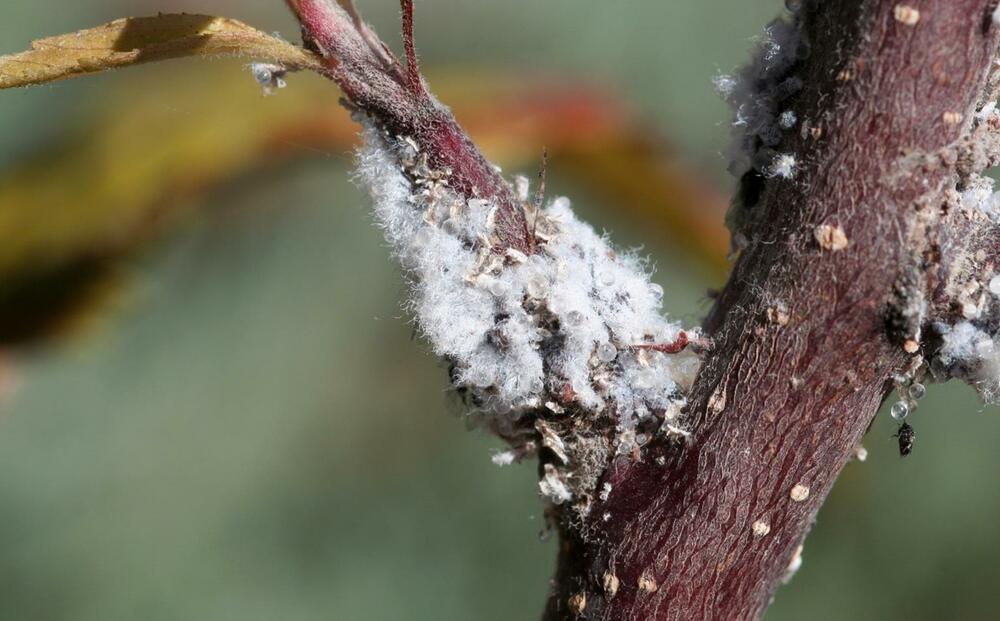
Woolly apple aphid colony

apple aphid (Aphis pomi) infestation

Woolly apple aphid colony

Cankerous tumours on apple shoot caused by colonies of Eriosoma lanigerum.
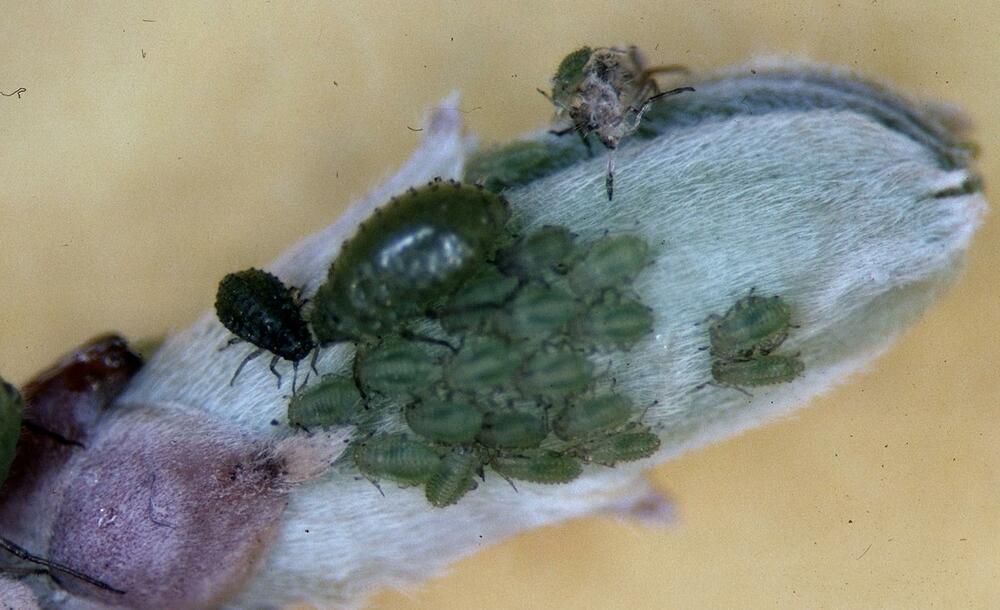
Green apple aphid colony on crab apple

Woolly aphid damage

Woolly aphid infestation

Perennial canker on an apple tree, caused by woolly aphids (Eriosoma lanigerum).

Woolly apple aphid infestation on crab apple
Symptoms
Small soft bodied insects on underside of leaves and/or stems of plant; usually green or yellow in color, woolly apple aphids are covered in masses of white, wool-like material; green apple aphids are dark green when they forst hatch and change to yellow-green with darker green spots as they mature; if aphid infestation is heavy it may cause leaves to yellow and/or distorted, necrotic spots on leaves and/or stunted shoots; aphids secrete a sticky, sugary substance called honeydew which encourages the growth of sooty mold on the plants.
Cause
Insects
Comments
Management
If aphid population is limited to just a few leaves or shoots then the infestation can be pruned out to provide control; check transplants for aphids before planting; use tolerant varieties if available; reflective mulches such as silver colored plastic can deter aphids from feeding on plants; sturdy plants can be sprayed with a strong jet of water to knock aphids from leaves; insecticides are generally only required to treat aphids if the infestation is very high - plants generally tolerate low and medium level infestation; insecticidal soaps or oils such as neem or canola oil are usually the best method of control; always check the labels of the products for specific usage guidelines prior to use.
Apple maggot
Rhagoletis pomonella

External symptoms of injury on apple.
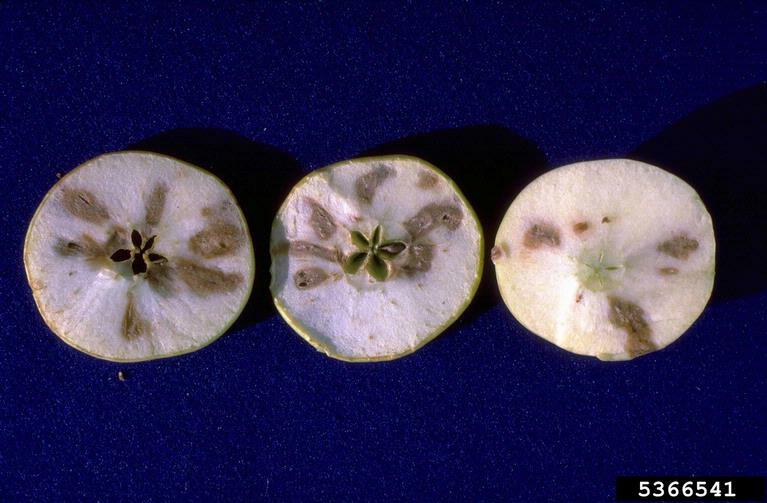
apple cut open to show damage by the apple maggot (Rhagoleti pomonella).

Apple maggot (Rhagoletis pomonella) damage to apple
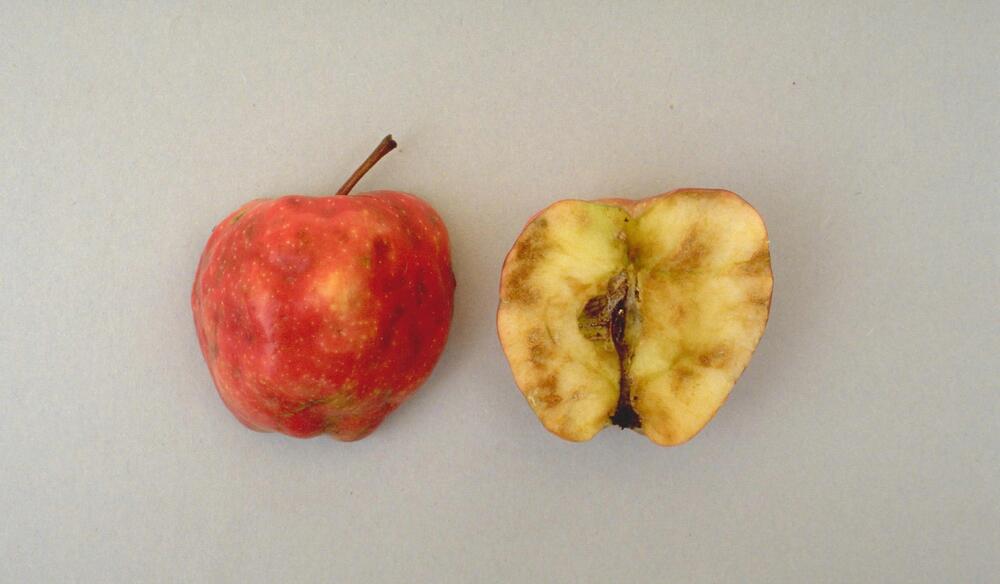
Apple maggot damage

Female adult insect

External appearance of apples damaged by the apple maggot (Rhagoleti pomonella).

Paradise apple injured by apple maggot (Rhagoletis pomonella).
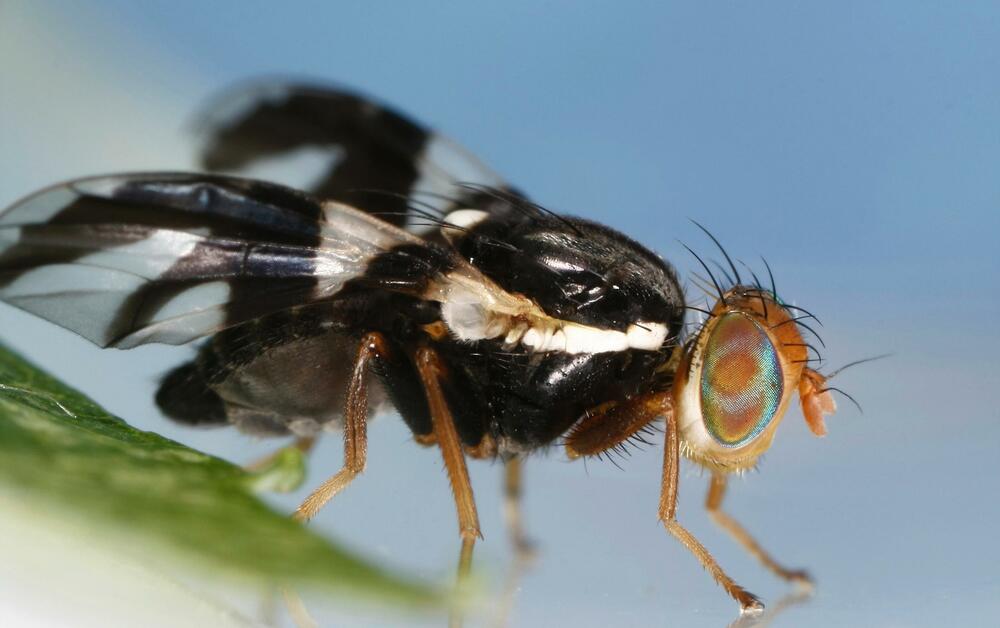
Adult insect

Adults captured on Pherocon AM trap

Apple tree with a yellow sticky trap for apple maggots (Rhagoleti pomonella).

Symptoms of apple maggot on fruits
Symptoms
Misshapen, pitted and sunken areas on fruit surface; browning and rotting of apple flesh.
Cause
Insect
Comments
Management
Use red spherical sticky traps to trap adults, place one trap for every 100 apple fruits; bag apples by tying or stapling polythene bags around fruit to prevent adults laying eggs - cut corners from bags to ensure air supply to fruit; spray fruit with insecticide prior to eggs being laid.
Codling moth
Cydia pomonella

Tunneling made by exiting codling moth larva

Damage caused to an apple fruit by the codling moth Cydia pomonella in the field.

Moth pupa in apple fruit
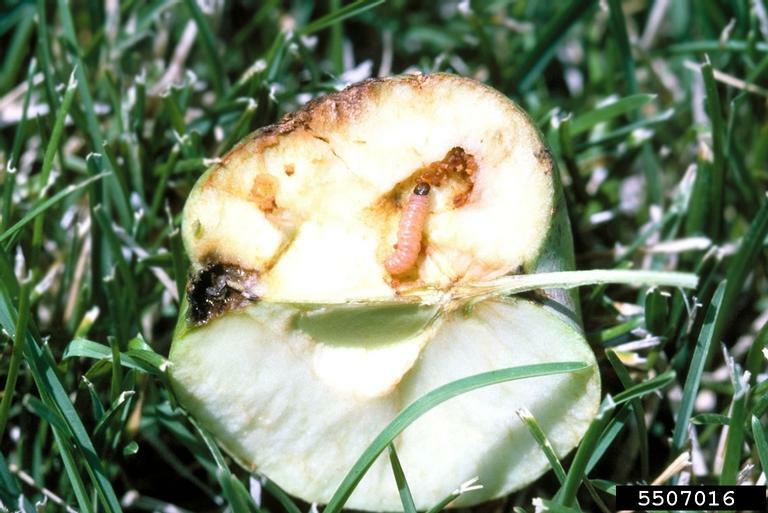
Codling Moth Larva in Apple

Damage to apple fruit by moth larvae
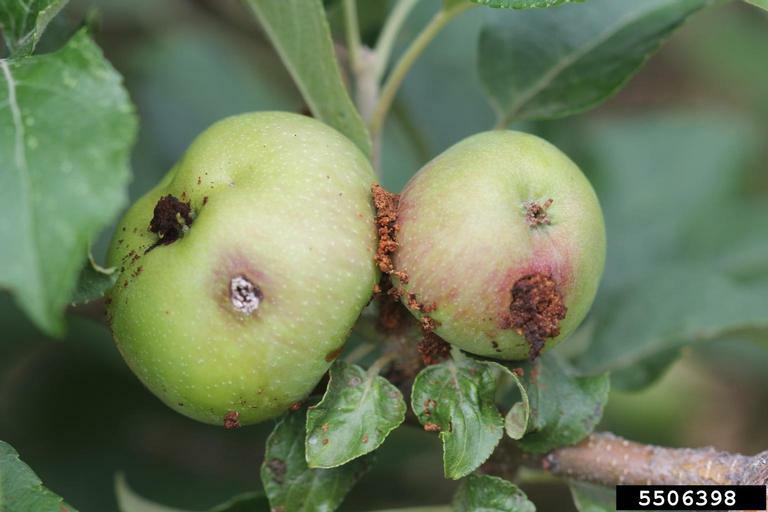
Infected fruits
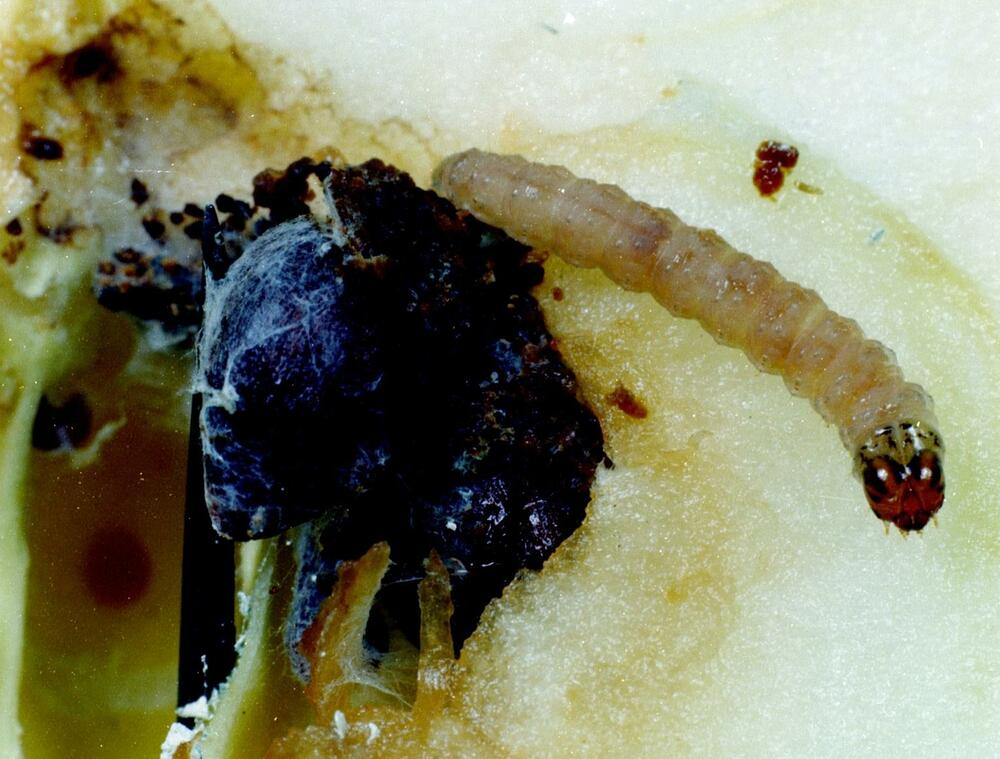
Codling moth larva in apple fruit
Symptoms
Holes and burrows in fruit; holes may be blocked with crumbly brown frass (insect excrement); wounds may be shallow or may be deep burrows extending to the fruit’s core; adult insect is a dark brown moth; larvae are pink with a brown head and may be up to 1.3 cm (0.5 in) long.
Cause
Insect
Comments
Management
Proper pruning methods help to open out tree canopy to ensure treatments penetrate interior of the tree and reach larvae; removal of any wild hosts or trees in abandoned orchards helps remove reservoirs of insect; organically acceptable control methods include application of Entrust and kaolin clay; small scale growers and home gardeners can remove infested fruit by hand before larvae leaves fruit to reduce insect population; successful reduction of insect population in large scale orchards is usually achieved by mating disruption by releasing pheromones over successive years.
Leafhoppers (White apple leafhopper, Rose leafhopper)
Typhlocyba pomaria
Edwardsiana rosae
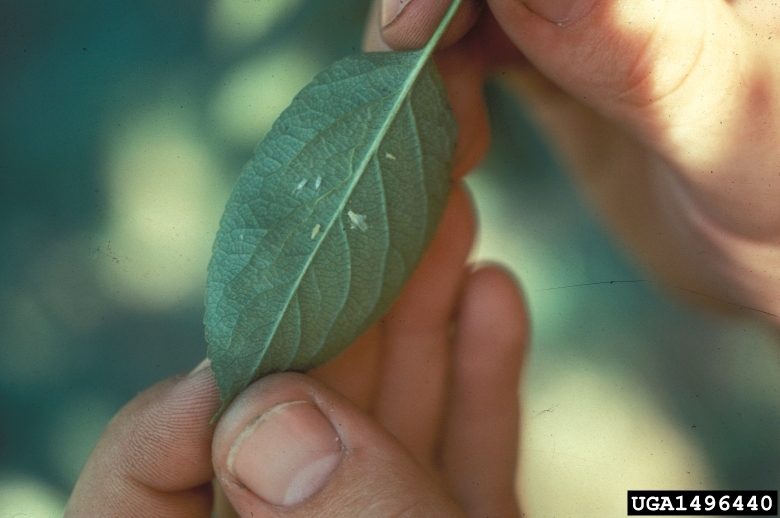
White apple leafhopper adult

White apple leafhopper nymph on underside of leaf

white apple leafhopper Nymphal skin
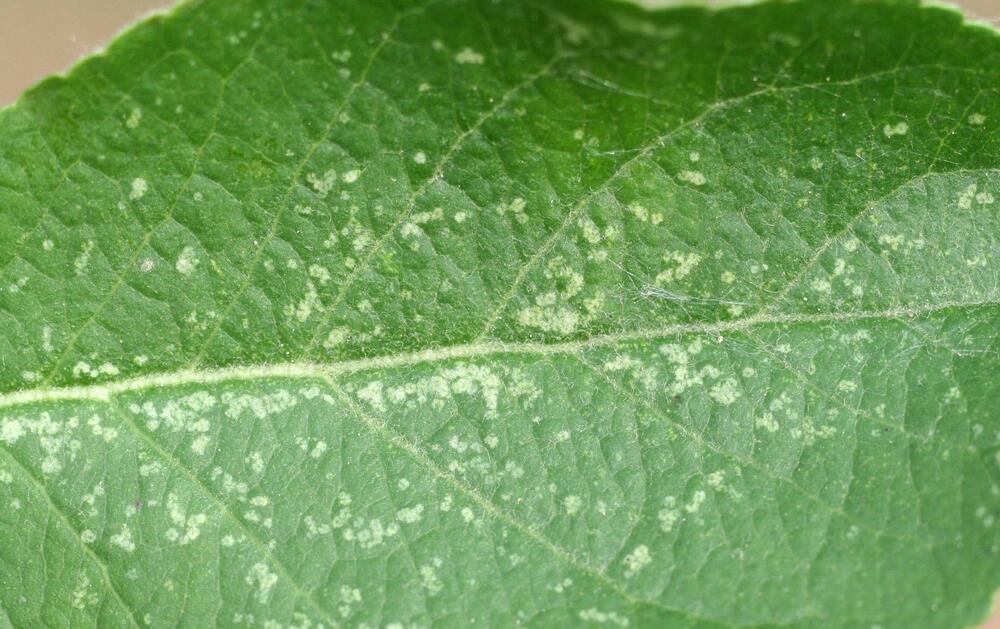
Characteristic white stippling on crab apple leaf caused by leafhoppers
Symptoms
White stippling on foliage; may be a reduction in fruit size; black specks of frass on fruit; sticky exudate on fruit and leaves caused by excretion of honeydew by insect.
Cause
Insect
Comments
Management
Control of leafhoppers is becoming problematic as they are developing resistance to organophosphate insecticides; sprays of appropriate insecticides are most effective at controlling the insect before the adults emerge; monitor trees for appearance of nymphs.
Leafrollers (Omnivorous leafroller, Redbanded leafroller, etc)
Platynota stultana
Argyrotaenia velutinana

omnivorous leafroller (Platynota stultana) larva

Redbanded leafroller on apple leaf
Symptoms
Leaves of plant rolled and tied together with silk webbing; feeding damage to rolled leaves; defoliation of plant; silk webbing may also be present on fruits and fruits may have substantial scarring from feeding damage; larvae wriggle vigorously when disturbed and may drop from plant on a silken thread.
Cause
Insect
Comments
Management
Monitor plants regularly for signs of infestation; remove weeds from plant bases as they can act as hosts for leafrollers; Bacillus thuringiensis or Entrust SC may be applied to control insects on organically grown plants; apply sprays carefully to ensure that treatment reaches inside rolled leaves.
Roundheaded apple tree borer
Saperda candida

Damaged tree

Roundheaded apple tree borer (Saperda candida) adult
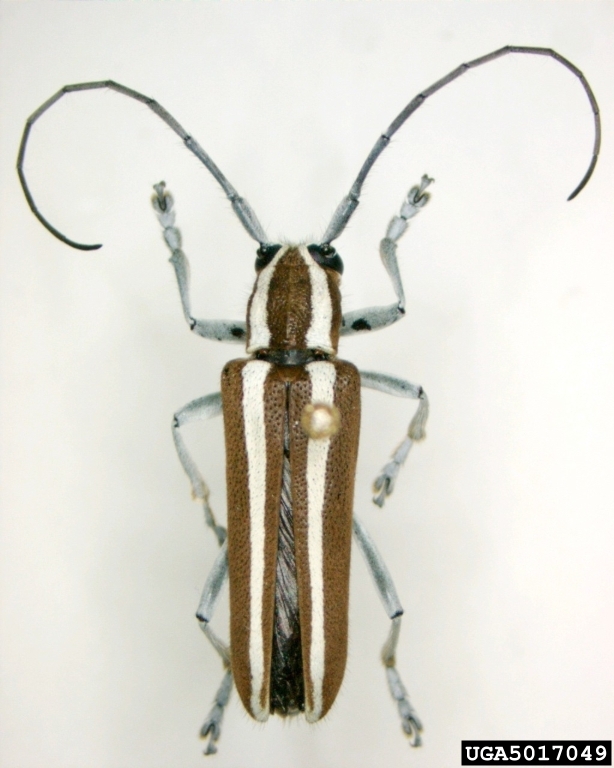
Adult insect

Borer holes at base of tree

Larvae
Symptoms
The presence of bore holes at the base of tree which are covered by pigtail-shaped frass and/or darkened areas in the bark due to sap flow are the proof of insect infestation. The young may kill by one or two larvae infestation. The older trees show drying and break off near the base.
Cause
Insect
Comments
Management
Use of trunk wraps to avoid insect attack. Removing and killing of larvae from the tunnel if possible. Application of suitable insecticide.
Stinkbugs (Various)
Various

Adult red shouldered stink bug
Symptoms
Dark colored pinpricks on fruit; depressed dimples on fruit surface with white, pithy area underneath; stink bugs often carry pathogens in their mouthparts which can cause secondary infections and decay of fruit; adult insect is shield-shaped and brown or green in color; may have pink, red or yellow markings; eggs are drum shaped and laid in clusters on the leaves; larvae resemble the adults but are smaller; insect frass may be visible on the fruit is small, brown teardropped shaped deposits
Cause
Insect
Comments
Management
Remove weeds around crop which may act as overwintering sites for stink bugs and practice good weed management throughout the year; organically accepted control methods include the use of insecticidal soaps, kaolin clay and preservation of natural enemies
Category : Mites
Spider mites
Tetranychus urticae
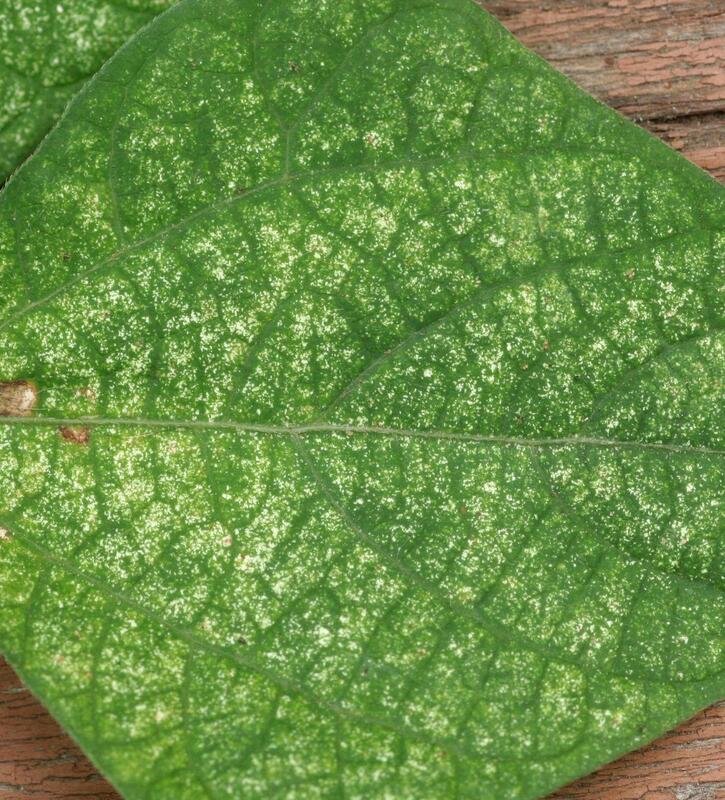
Characteristic stippled leaf caused by spider mites
Symptoms
Leaves stippled with yellow; leaves may appear bronzed; webbing covering leaves; mites may be visible as tiny moving dots on the webs or underside of leaves, best viewed using a hand lens; usually not spotted until there are visible symptoms on the plant; leaves turn yellow and may drop from plant
Cause
Arachnid
Comments
Management
In the home garden, spraying plants with a strong jet of water can help reduce buildup of spider mite populations; if mites become problematic apply insecticidal soap to plants; certain chemical insecticides may actually increase mite populations by killing off natural enemies and promoting mite reproduction






